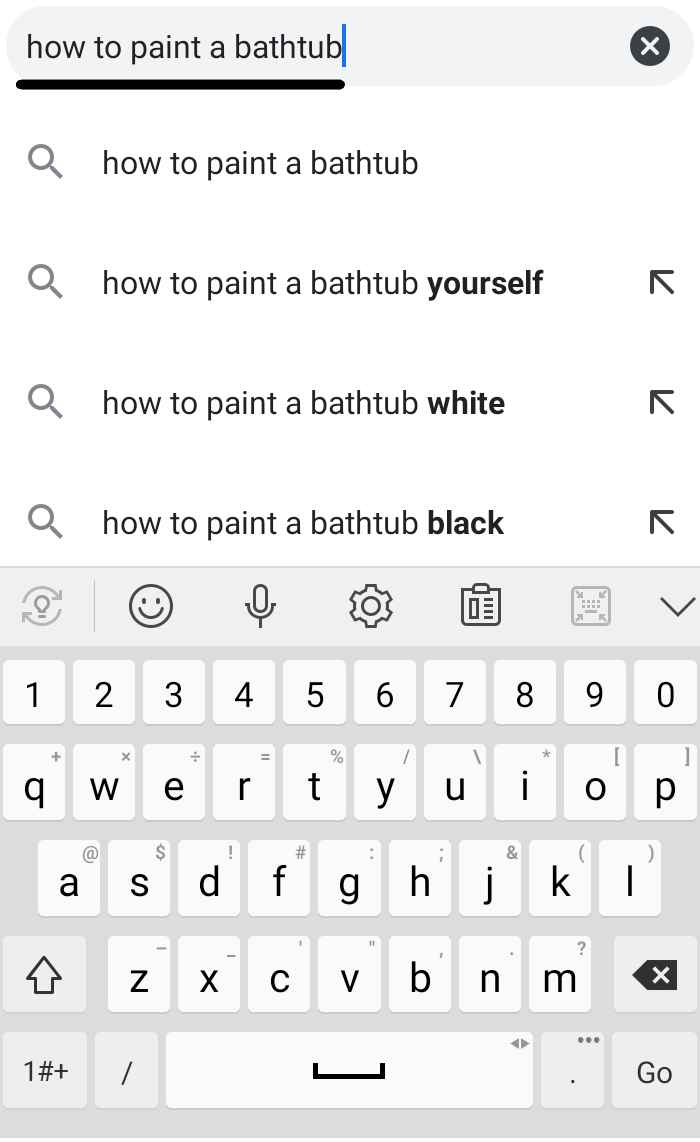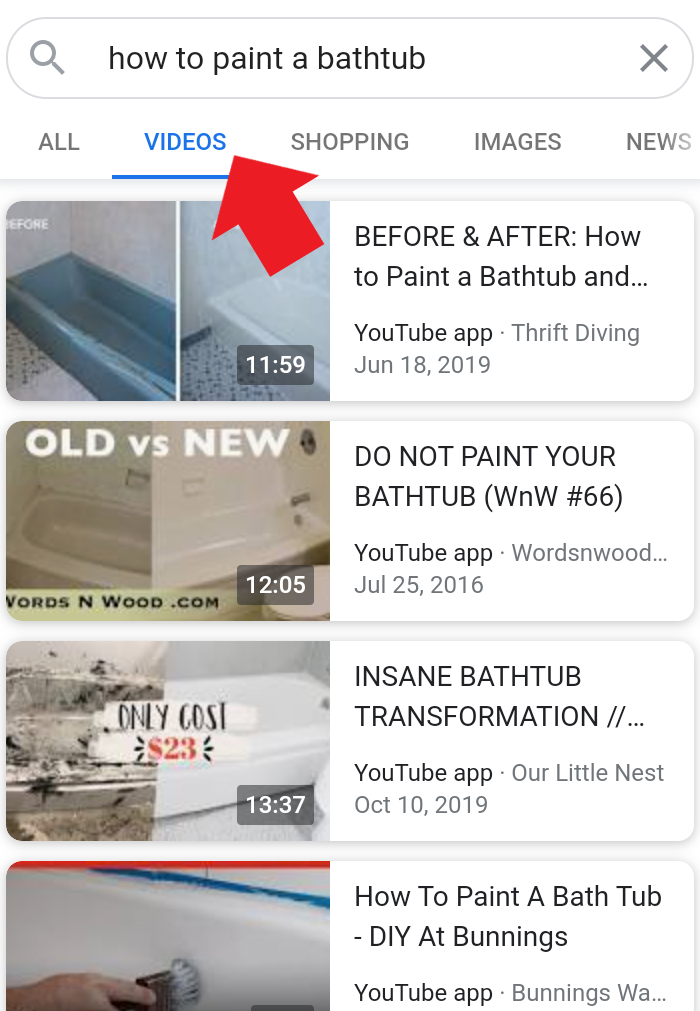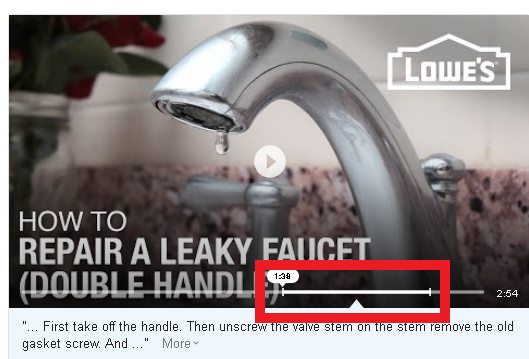Studying how people use video search to find the content they want is an essential but often neglected area of marketing.
When we understand how video search engines work, we can begin to devise marketing strategies around this traffic source. When you understand your audience’s search intent and properly optimize your videos, you unlock new means of generating leads for your business.
In this guide, we break down video search engines and how you can use them to increase your traffic.
What Is Video Search?

The first thing we need to think about is why people search for videos in the first place. What makes someone look for a specific video? Why are they searching for that video? What are they looking to accomplish?
All of these questions are important to answer, and we’ll address them, one by one.
According to Google, people look for videos for three different reasons. They either want to reflect, connect, or learn. So, what does that mean exactly?
An Opportunity to Reflect
Video in any form has provided us with a way of escaping reality. For many decades, it’s been in the form of television. Many people use video to see life through a different lens, which helps them reflect on their own life.
This could be one reason someone might search for a video.
To Connect with Someone
Another reason someone may use video is to foster connections. 51% of people in a study completed by Google say they feel the need to connect with others through video content.
A great example might be someone struggling with addiction to alcohol. Their first response would be to retreat and hide from friends and family because that’s what they’re used to doing.
A quick video search displays hundreds of videos of people going through the same thing, and now they can relate to someone. We seek video to connect with our community and to meet on common ground.
To Learn Something New
Videos have become a way for us to learn about anything we might be interested in, and there are nearly no limitations to what we can find with a quick video search. Whether you’re looking to touch up on something you know already or dive into something completely new, there are millions of videos on the internet to help you accomplish your goal or explore your hobbies.
How People Search for Videos
Now that we understand the “why,” let’s look at the “how.” How do people search for videos on the internet, and what does that tell us as marketers?
One very common way people search for videos is in traditional search engines. A quick Google search for something actionable will supply hundreds of videos revolving around that topic. For example, if someone wants to learn how to properly tape off a living room to use a residential paint sprayer, it might be easier for them to watch a video on how to do it rather than read up on it.
You can also go to the video section on the search result page to see just video results.

You can type your search into the Google search bar and then choose from the recommended videos, or you can click the videos tab and search strictly for video rather than text results.

Another popular method people use to search for videos is social media. Facebook, Instagram, Twitter, TikTok, and others all make it simple for you to search for videos in various ways.
For example, Instagram uses hashtags to tag videos. This feature makes it easy for people to come in and search the specific hashtag and find your video if you’ve optimized it correctly.

On Facebook, hashtags aren’t as popular, but you still have video descriptions and closed captions that can be searched.
How to Use Video Search to Grow Your Business
As marketers, it’s our job to bring the right content to the right audience at the perfect time.
To do this, we need to have a firm understanding of a few things.
#1: Understand Your Video Search Audience
You need to understand who your target audience is, but this gets a little more advanced when talking about video search. This task isn’t as simple as optimizing a landing page for your organic search audience. We have to talk about a complete overhaul based on the platform you’re using.
There are a few levels to this.
The first level is choosing the platform you’re using to promote your videos. For example, the audience on Facebook is much different than the audience on TikTok. No matter how hard you try, you’re not reaching many seniors on TikTok, even if you have the perfect piece of video content for that demographic.
Once you understand the platform’s overall demographic, you need to break it down and learn who your specific audience is. What is your buyer persona? What types of videos do they like to watch? Are they looking for entertainment, information, connection, etc.?
The last level is, what types of searches are they making? Once you know where and who they are, how can you connect them with your video? What are they typing into the search bar, and how can you direct that to you?
The easiest way to understand all of this is to reverse engineer it the same we do with organic SEO. Put yourself in your ideal client’s shoes and search for a video within your wheelhouse. Figure out what search phrases lead where and what you need to do based on your competition to jump ahead of them.
#2: Connect With The Video Searcher
This point piggybacks off the previous one, but it goes a little deeper. Connecting with the searcher means understanding what they’re looking for so you can be the one to provide it.
Attention spans are short, so you need to provide the right answer as soon as possible in your video; otherwise, people will turn somewhere else.
Another key to video search is giving the audience exactly what they want, right away. If the first few seconds of your video doesn’t pique the viewer’s interest, they’ll move on to the other hundreds of options available to them.
#3: Know Your Chosen Video Platform
Another point to consider is the chosen platform you’re using from point one. How well do you understand how to use it? Do you know how the video search process works? Do you understand the basics of the algorithm and methods used to determine which videos show up and how they rank them?
In the same way that we try to understand everything about Google’s algorithms for SEO, we need to do the same with each platform, and if you don’t understand it, you might get left behind.
#4: Time it Correctly
Timing is a huge factor. The length of your video will play a significant role in who chooses to watch it and how well it ranks. There isn’t an “end all be all” for video length because the ideal length depends on the platform.
That said, if someone is looking for a quick solution to a problem, throw that case out the window. For example, when someone is trying to figure out how to upload a featured image on WordPress, they don’t want to watch a 15-minute video because they’re going to know there’s a lot of fluff.
Your video would likely perform much better if it was only one minute because people will assume it is straight to the point.
Google even pinpoints in many video searches where the result you’re looking for is in the video in their search results.

They pull a snippet out for you to get the answer you’re looking for without having to watch the whole thing.
#5: Optimize Properly
Lastly, you need to optimize your videos. There’s a whole guide to video SEO here, but there are some important factors pertaining to video search specifically.
First, your thumbnail:
The thumbnail of your video is like the trailer for your upcoming movie. If the trailer sucks, chances are, no one is going to see the movie.
If your thumbnail sucks, fewer people will click through to your video. Your thumbnail needs to contain keywords, and it must instill confidence in the viewer that your video will solve their problem.
Second, you need to optimize your video descriptions on all platforms. Every video search platform uses keywords to determine how relative a video is to what the user is searching. You need to make sure you’re following fundamental SEO principles when it comes to video search as well.
The Most Popular Video Search Engines

Many people wonder what the top video search engines are but keep in mind, it’s unique to the individual. What’s a hit on Facebook might tank on TikTok and vice versa. When choosing from these top six video search engines, make sure you factor in everything we’ve discussed so far.
Facebook Video Search
Video marketing on Facebook is all about interrupting patterns. If you’re targeting an older demographic, your content is a bit more serious, and you’re able to grab attention quickly, Facebook might be an excellent place for you.
The problem that I’ve seen with Facebook video is the implementation of intrusive ads. That’s why I recommend sticking to short, sweet, and direct videos on Facebook. If your primary purpose of creating the video is to sell something, keep it super short, ideally less than 60 seconds.
One area where Facebook has shined is in e-commerce. I see videos all the time of people using a product they purchased online, and they do such a great job of making the video appear organic.
The key to getting your video in front of your audience on Facebook is to make sure you include the right keywords in your description and have a very refined target demographic.
YouTube Video Search
Understanding Youtube video search is all about understanding video SEO. There are also various tools and extensions out there to use alongside the manual work and knowledge you obtain.
One thing about YouTube is that they reward continuous creators. Consistency is essential, and if you plan on having success with YouTube, you need to create videos every week so the algorithm sees that you’re a consistent creator.
I see YouTube marketing as an excellent way for affiliates, content creators, and artists to display their work. If you produce something as a product or you’re an affiliate or something, YouTube is the place to show your stuff.
The platform also puts much more emphasis on longer videos. Plus, if you’re creating high-quality content, the longer videos will increase your watch time, which has a positive impact on ranking.
Instagram Video Search
Instagram is built on discovery, and if you’re looking to go from nothing to something, Instagram seems like the place to be. Video search on Instagram is made possible through the use of hashtags.
When someone wants to find something specific or they want to filter content, they search using hashtags.
One great way to get discovered on Instagram is by capitalizing on trends. Throughout the year, Instagram has a plethora of hashtag trends that explode in terms of search volume, and if you find one that’s relevant to you and your audience, you may be able to create a viral video or “reel” (their version of TikTok) in no time.
Twitter Video Search
Capitalizing on Twitter video search is similar to Facebook; it needs to be interruptive without being intrusive. You’ll want to have the proper key phrases in your video’s description because users will search for content relating to that phrase.
Also, keep in mind that platforms like Twitter choose which videos to display on users’ Twitter feeds, so having relevant keywords pertaining to the content in your video may end up on the feed of your ideal client.
Vimeo Video Search
Vimeo is very similar to YouTube, but Vimeo has an advantage with smaller boutique-style audiences. There’s less competition, the quality of videos is better, and viewers are more dedicated to the videos they watch.
Another recommendation for marketing on Vimeo is to stay on top of the engagement with your viewers. Because the audience is so much smaller, there’s a lot less spam and bots, which means more actual conversation from people who may have questions about whatever it is you’re selling or promoting.
TikTok Video Search
Content is king on TikTok, and compared to all the other platforms, this app is the only place where you can post a video with no followers and get millions of views if you know what to post.
It’s essential to understand your audience and tap into their feelings, emotions, fears, and desires. Who are you looking to target, and what do you want them to feel when watching this video?
Once you’ve got that figure out, put in a proper description, add some hashtags, and see what happens. There’s no proven formula because the content is so important on this platform. If your content resonates with the right people, it will get likes and shares, and the sky’s the limit from there.
Conclusion
Now that you understand video search, how people search for videos, why they search, and how to reach them, how do you feel? Do you feel like any of the previous video platforms could work for your brand?
If this all sounds like a lot of work, consider learning more about what we’ve done to help other marketers get their videos in front of the right audience.
Which platform do you think is the best for video marketing going forward?
The post What is Video Search and How Can it Help Your Business? appeared first on Neil Patel.




